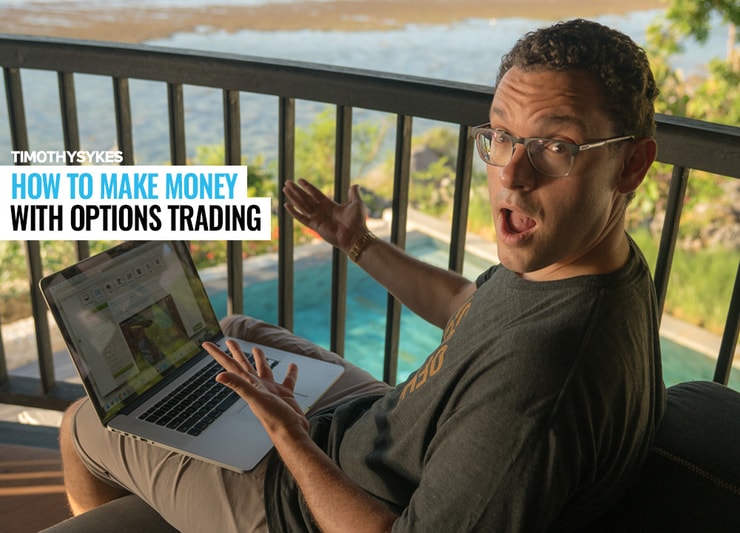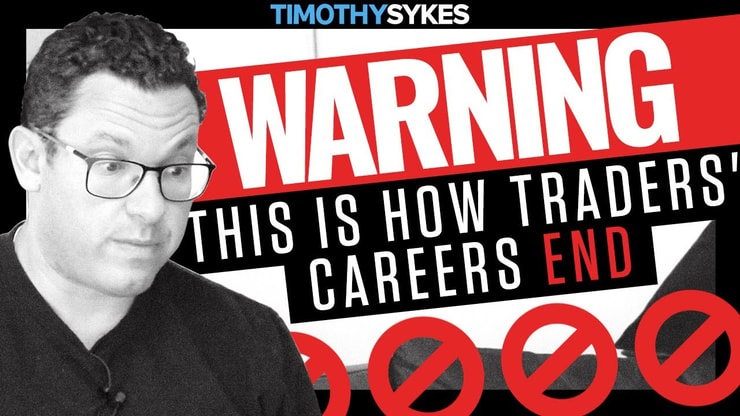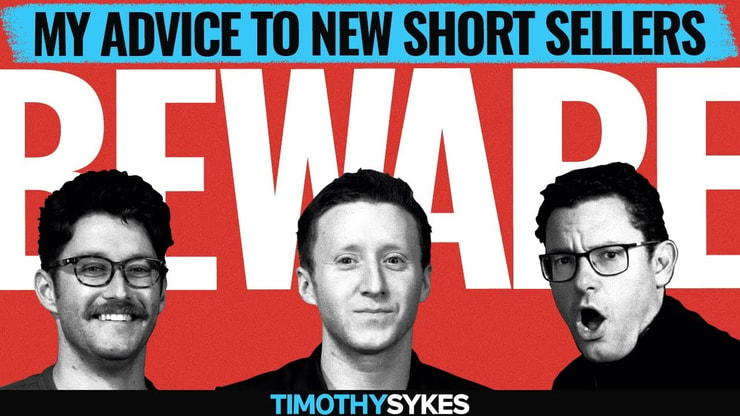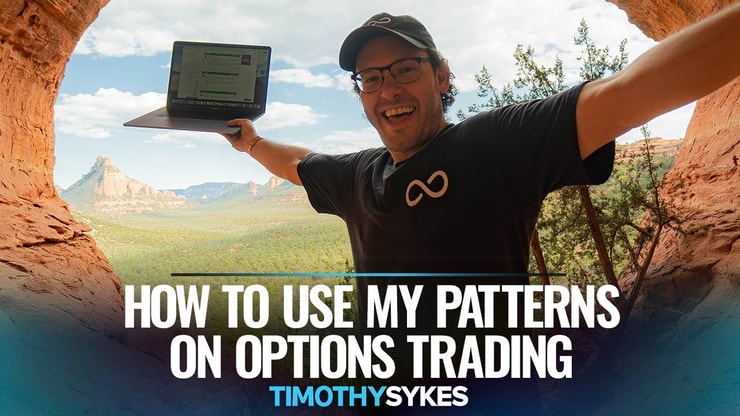You can make money from options trading — just ask my former student Mark Croock. He took my penny stock trading style and applied it to options.
The result? $3.9 million in career earnings, mostly from options trading.
He didn’t do this by focusing on making money. The key to making money trading options is the same as any other trading strategy…
You’ve got to forget the money and focus on the process.
Improving your trading skills will make you a smarter and more self-sufficient trader. The money should follow if your skills are sharp.
Table of Contents
What Is Options Trading?

Options trading is trading a derivative instrument (the option) which lets you profit off an asset’s price movements without actually trading the underlying asset. An options contract gives its holder the right to buy or sell its underlying asset at a certain price during a certain time period. It just gets more complicated from there.
There’s an inherent level of risk with trading options. That’s why most brokers require options trading approval. The level of options trading you’ll be approved for is based on your experience and financial situation.
Robinhood is one of the most popular brokerages for options trading. Learn more about options trading on Robinhood and how to access the options market on the broker’s app.
Options trading has two parties: the option holder/buyer and the option writer/seller. When you buy an options contract, you pay the writer for the right to buy or sell their stocks or other assets. This contract contains the executable price and expiration date of this right.
The money you pay the option seller is called a “premium.” If you let your option expire, you’ll only lose the premium.
You can execute the option if it reaches or exceeds its “strike price” — which is the minimum price that the option contract can be executed at.
Evaluating Your Personal Risk Tolerance
Evaluating your personal risk tolerance is one of the most important things any trader can do.
One of the best things about buying calls is that they have a built-in risk limiter. If your option doesn’t hit the strike price, all you’ll lose is your premium.
But knowing your risk tolerance is still important. Here’s how you evaluate and regulate your risk tolerance in every form of trading:
- Understand the risk of each trade
- Go for small gains
- Cut losses quickly
Option Buying vs Writing

There are two sides of the option trading coin: holders/buyers and writers/sellers. Buyers of Level 1 options generally take a limited risk for near-limitless profit. Level 1 options writing requires you to either buy or sell the option’s underlying asset to the options buyer if they exercise the option…
But Level 1 options are always covered. This means you only risk the asset itself — not an unlimited amount of money.
How does each side make money? Here’s a breakdown:
- Level 1 option buyers make money if their option hits its strike price. A trade works out if they have in-the-money options to exercise. The more in-the-money their contract, the bigger their potential profit. They can also sell the contract to another option buyer before expiration.
- Level 1 option writers only get money from the premium, but it’s guaranteed. Plus, writers get the option price earnings upfront instead of having to wait until its expiration. But — this is a big ‘but’ — they may lose money on the trade if the option becomes executable.
Want to learn more about the basics of options trading? Check my guide to how options trading works.
Ways to Make Money With Options Trading

There are many ways to make money with options trading. But if you concentrate on making money, you’ll miss the opportunities to do so!
Here’s my advice: set the money aside and focus on the process. Work on your options trading strategies and find the one that fits your risk profile and needs.
Here are four basic types of options you can try:
Buying a Call
Buying calls is one of the basic options strategies. Here, you buy the right to purchase a stock at a certain strike price before it expires.
Here’s an example of a call option:
Company Y’s current stock price is $50. You expect its stock will rise by at least 10% within the next month. To make a profit, you buy a call option to purchase 100 shares of Company Y stock at $55 per share.
You’ll profit if Company Y’s share price rises beyond $55 before your contract expires. If it does, you can buy the stock at the $55 strike price and profit from the difference.
You can ignore the options agreement if the share price doesn’t reach $55. All you’ll lose is the options premium.
Why We Like It
Buying a call is the most basic strategy in options trading. It has relatively low risk with high potential profit.
Buying a Covered Put
A put option is the opposite of a call option. Puts give you the right to sell stock at an agreed-upon strike price.
Here’s an example of a put option:
Suppose Company Z’s current stock price is $40, but you predict it’ll fall in the next month. You can buy a put option to buy 100 shares with a strike price of $36 per share.
If the stock’s price falls beneath the strike price, you can buy the shares at their current price, then sell them at the price they were at when you bought the put.
You need to have the underlying asset to execute a covered put. A put option is sort of like shorting a stock… Except you’re shorting 100 shares per contract.
The margin needed to take out a naked put goes way past the 4x or 5x leverage most brokers allow. That’s why naked puts are higher-level options strategies, only accessible to traders with a good amount of cash in their account.
Another way to make money on puts is by selling the contract before expiration. The remaining time before expiration gives it value.
Why We Like It
Covered puts can be a good hedge for a volatile stock. If the stock price goes down, you can execute the put. If it goes up, you can forget about the put and sell the stock in a normal transaction.
More Breaking News
- Is TeraWulf Inc.’s Stock Worth the Hype After Its Recent Moves?
- Is Arm Holdings’ Stock Ready for a Comeback? Investigating Recent Market Moves
- Rigetti Computing: From Surging Prices to an Uncertain Future
Selling a Covered Call
Writing or selling covered calls requires the seller to own the underlying asset. If the call hits its strike price and the option holder wants to exercise it, having the asset in hand will limit your losses.
This strategy carries the same risks as buying a covered put.
As a call writer, you want the stock price to be equal to or below the strike price at expiration. In that case, most option buyers won’t exercise their contract — this means you keep the entire premium. But if the option is in the money, you have to deliver the stock to the buyer.
Why We Like It
Selling calls is typically used to make extra income from your trading account. You can write calls on stocks you currently own, and you’re basically guaranteed to get the premium.
However, if a stock gets squeezed like GameStop did in 2021, your unrealized gains could be exponential.
Writing a Put
Writing a put means you’ll buy the stock at the strike price if the buyer exercises it. You receive a premium from the option buyer in exchange for this obligation.
Put writers want the stock price to stay above the strike price. If the current price at expiration exceeds the strike price, they get to keep the premium without losing money on the trade.
Put writers can lose money when the stock price falls below the strike price. In that case, they have to purchase stocks from the option holder at an inflated price.
Why We Like It
Writing puts is one way to make money from range bound or uptrending stocks.
Final Thoughts
Just like all forms of trading, you can make money from trading options. Case in point: Trading Challenge mentor Mark Croock and his $3.9 million career earnings.
Here’s what you don’t see: all the years of training that have made Mark such an awesome options trader. He’s drilled down on his options strategies so much that he now teaches them in his Evolved Trader program.
Going into an options trade with money on the mind probably means you’ll lose a lot of it.
Instead of thinking about the money, think about how you’ll improve. The fastest path to improvement is learning from those who’ve been there before …





Leave a reply